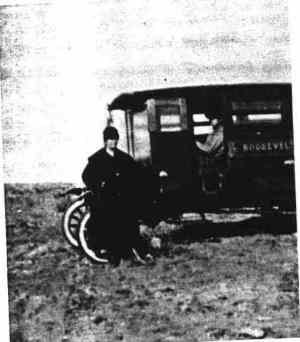FLOYD
|
FLOYD |
|
|
|
|
NAME: Floyd COUNTY: Roosevelt ROADS: 2WD GRID: 4 CLIMATE: Sand, wind, dust, hot and cold BEST TIME TO VISIT: All year long at your convenience |
COMMENTS:
Sun, silence and wide open spaces--these were the characteristics of Roosevelt County arund the turn of the century when pioneer settlers began filtering into the area from Okalhoma,Texas and Arkansas. A part of the last Western frontier, the land lay untouched and unawakened, waves of soft grass, browned and bleached by the desert heat, spread over rolling hills and wide plains. In the late 1880's and earlyi 90's, yucca grew in abundance on the flat, sea-like terrain, making it good cattle country. Buffalo had grazed the prairie withbands of Indians following the herds; the land had been touched and used, but never mastered. Perhaps, that is what appealed to those who pioneered in the development of Roosevelt County. As the pioneers moved in, small communities were quickly fromed and schools, post offices, chruches, and general merccccchandise stores established to meed the needs of thesettlers. REMAINS: A small store , maybe a gas station and a few people still in the surrounding area |
| Floyd, a typica ranching and farming community, was located west of Portales on New Mexico Raod 88, boasting of a general store in 1901, which was operated by a man named Milan. Two years later a post office opened with Simon Lane designatedpostmaster. It is believed that Floyd was named for a pioneer settler, Floyd Wharton. The children of the Floyd community attended "Homestead Schools" before the first town school was established in 1905. Teachers were generally hired for this central school by subscription for a three to five month term. Professor Sandifer was employed to teach in the first school. By 1919, Floyd had one of the largest schools in the county because of having consolidated with five other smallcommunities. Submitted by: Samuel W McWhorter |  Floyd School Bus Courtesy Samuel W McWhorter |
|
|